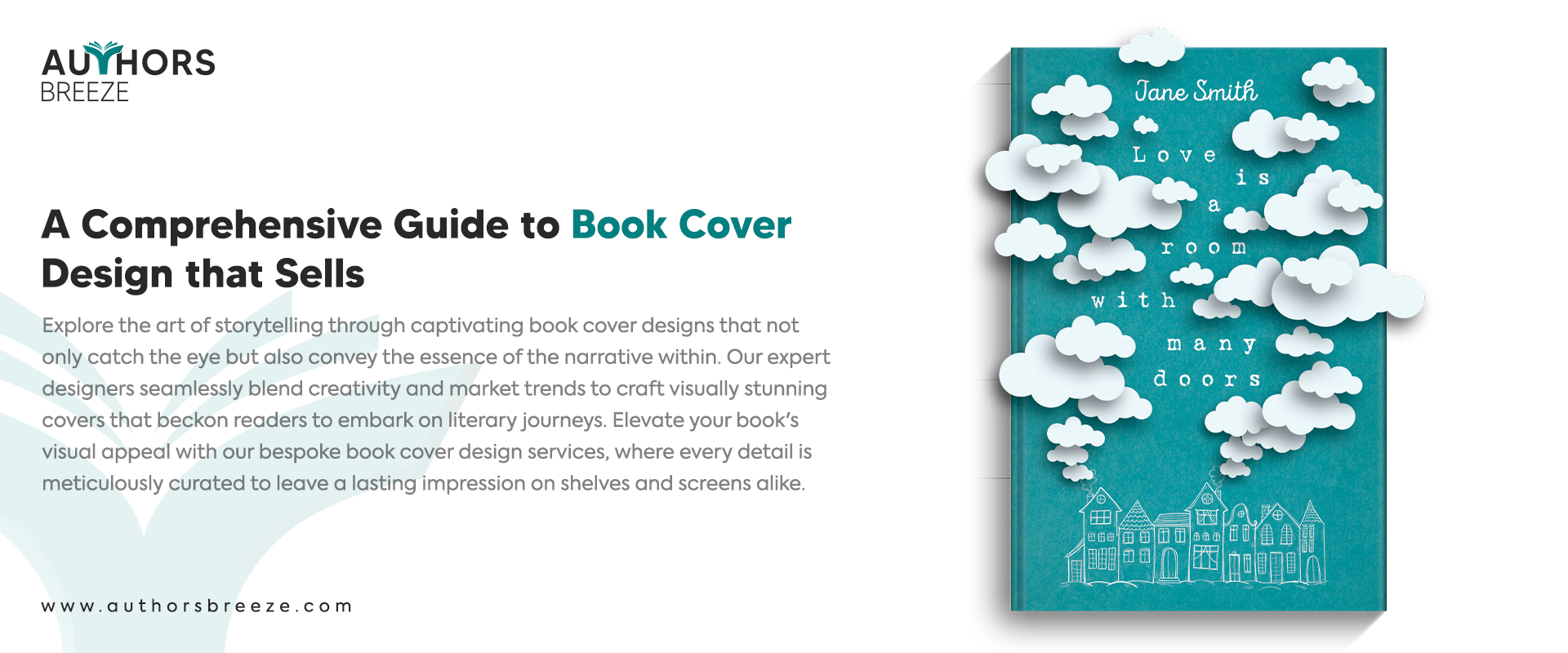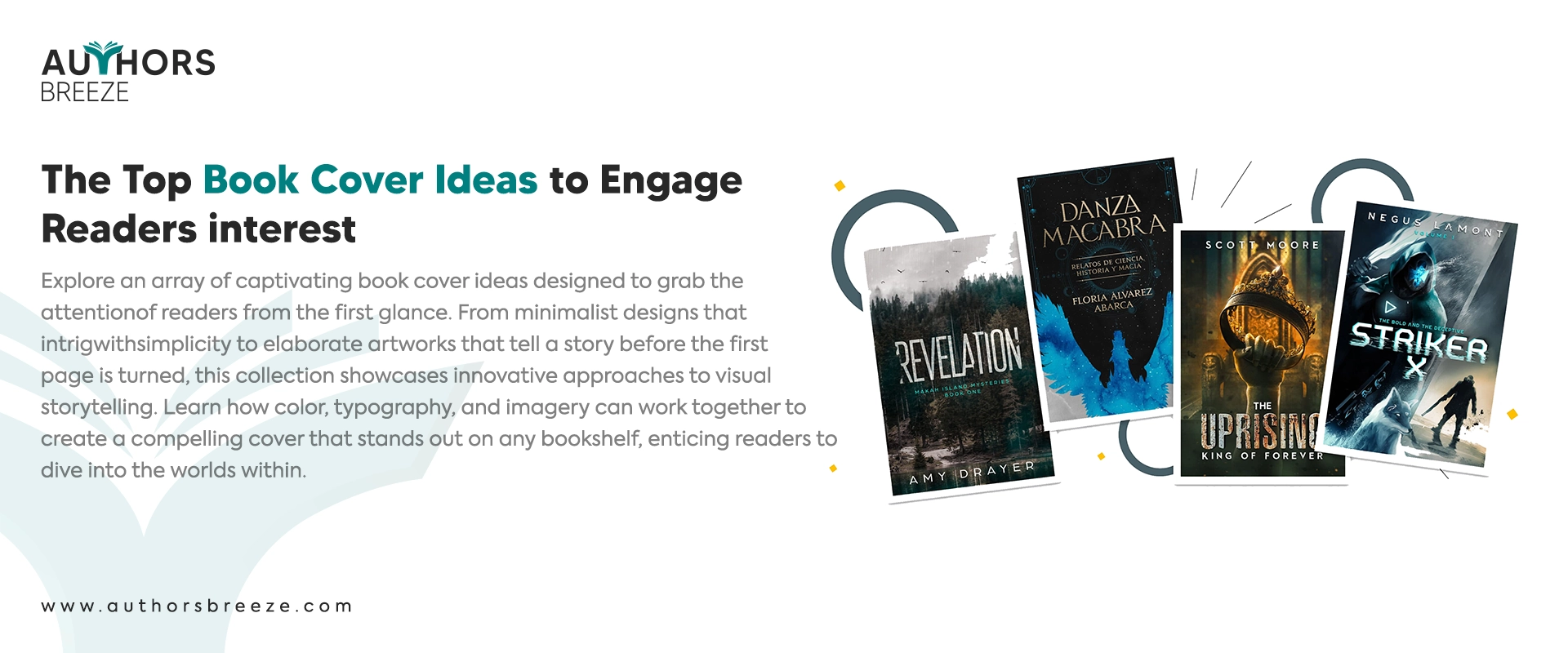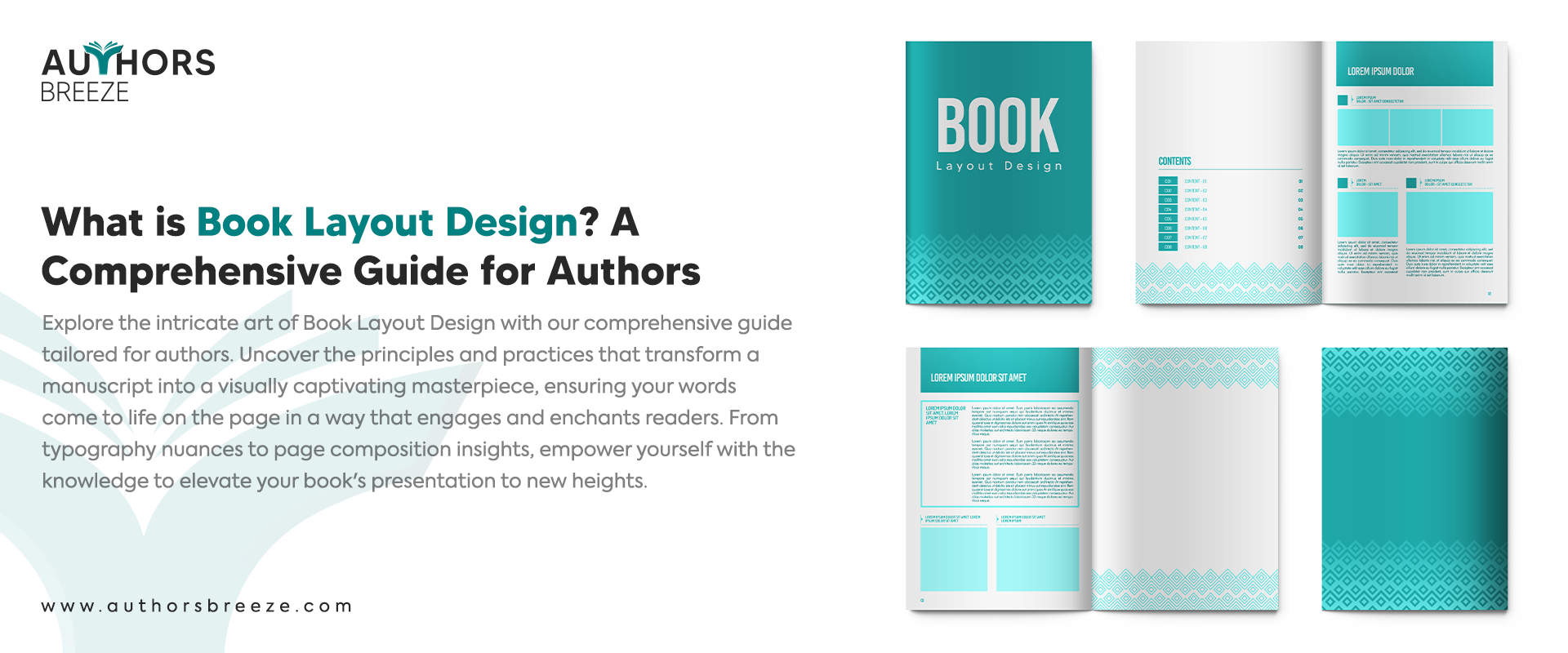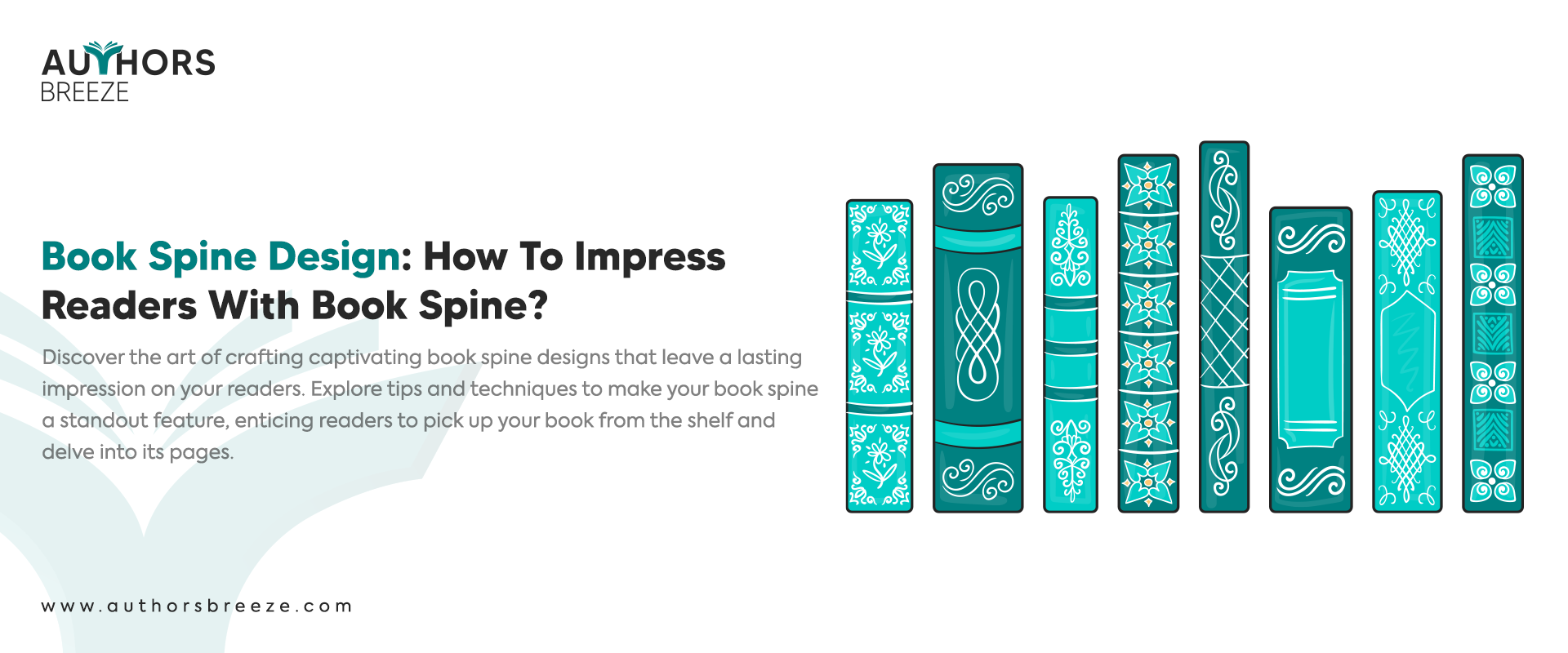Key Takeaways for Book Cover Design
- The book cover design is the first interaction potential readers have with your book. An eye-catching, relevant book cover design can make the difference between a book being picked up or passed over.
- Tailor your book cover design to appeal directly to the intended readership, considering their interests, age group, and genre expectations.
- Colors evoke emotions and can significantly influence a buyer’s decision. Choose colors that align with the mood and genre of your book.
- The font style, size, and legibility play a significant role in conveying the book’s tone and ensuring the title and author’s name are easily recognizable.
- Images should complement the text, not compete with it, and should be relevant to the book’s content and theme.
- For books that are part of a series, maintaining a consistent book cover design helps in brand recognition and encourages readership continuity.
- Pay attention to the technical requirements of book cover design, including resolution, dimensions, and file formats, to ensure your cover looks professional in both digital and print formats.
- While it’s important to be aware of current trends, aim for a balance between what’s trendy and what’s timeless to ensure your cover remains appealing in the long run.
- Consider hiring a professional designer if you’re unsure about the book cover design process. A good designer can bring your vision to life, ensuring your cover stands out professionally.
- If you opt for a DIY approach, use tools like Canva or Adobe Spark and avoid common pitfalls like overcrowding or using low-quality images.
Design a Cover That Captivates
First impressions count. Make your book stand out with Authors Breeze’s professional book cover design services. Our creative designers will craft a visually stunning cover that captures the essence of your story and attracts readers. Elevate your book’s appeal with a cover that speaks volumes.
Introduction to Book Cover Design
What is the first thing that grabs your attention when you walk into a bookstore or scroll through an online collection of books? Most likely, or maybe surely, it is the book cover! So, what is a book cover? A book cover is the face of the book. We often decide whether to pick up a book or scroll past it based on the appearance of the cover. It showcases the importance of book cover design. You should not just make the book look pretty. You should make it stand out and tell potential readers, “Hey, pick me up!”
Importance of a Book Cover Design in Marketing and Selling Books
A great book cover does a lot more than just look good. It works hard to sell your book. Here’s how:
First Impressions Count
A cover is the first thing people see. If your book cover is eye-catching, it can make someone stop and look closer.
Tells a Story
The book cover design gives clues about what’s inside. It can hint at the adventure, romance, mystery, or wisdom that the pages hold.
Grabs Attention
There are so many books out there. A unique book cover can help your book stand out from the crowd.
Emotional Connect
Colors, images, and fonts can all stir up feelings. A good cover design can tug at the heartstrings of the right audience.
Amplify Your Book’s Reach
Maximize your book’s potential with our strategic book marketing services. From crafting your book’s message to targeting the right audience, our marketing experts will design a comprehensive plan to increase your visibility and sales. Get ready to make your mark in the literary world.
Overview of Key Principles in Effective Cover Design
A book cover design should sell itself. In addition, it isn’t just about throwing together some images and text. Here are some design basics and principles to keep in mind:
Know Your Audience
You need to understand who your book is for. A cover that appeals to teenagers will look very different from one aimed at adults interested in history.
Keep It Simple
A cluttered cover can be confusing. It’s often the simple book cover designs that catch the eye.
Be Bold
Use strong, contrasting colors and big, readable fonts to make your cover pop.
Be Relevant
Make sure your cover reflects the content of your book. Misleading covers can disappoint readers.
Consistency is Key
Suppose your book is part of a series. In that case, you need to keep a consistent look. It helps readers quickly recognize your brand.
How to Make Book Covers that Sell?
1. Understand Your Audience
Before making a book cover design, you should know who you’re creating it for. You wouldn’t give your grandma the same gift as your best friend, right? Similarly, your book cover design shouldn’t be the same kind for all books. Each book has its own special audience. So, your book cover needs to speak to them directly.
Identify Your Target Readership
Genre
Books come in different genres. Each genre, such as romance, mystery, or science fiction, has its own vibe. A vampire romance book might have a scary yet full-of-love book cover design. In contrast, a sci-fi book might look cool and futuristic.
Age Group
The age of your readers matters a lot. A cover for kids’ books should be colorful and fun, with big, bold fonts. Teen books might have more drama and mystery in their covers. On the other hand, adult books can be a bit more sophisticated.
Interests
What do your readers love? If your book is about dragons and magic, your cover should promise adventure and fantasy. In addition, if it’s a cookbook, your cover should be something yummy to catch the eye of someone who loves to cook.
How do Different Audiences Respond to Visual Elements?
Different people like different things, and this is true for book cover designs. Here’s how:
Kids
Bright colors and playful images catch their eye. They love seeing characters they can imagine being friends with.
Teens
They’re drawn to covers that look edgy or mysterious. They want something that feels grown-up but not boring.
Adults
They might prefer covers that are a bit more subtle and artistic. They look for covers that hint at the depth as well as complexity of the book.
2. The Psychology of Color
Colors can make us feel all sorts of things without us even realizing it. They play a huge role in book cover design. The right colors can make someone feel excited, curious, or even a bit scared. All before they’ve read a single word of your book.
Color Theory: Emotions and Perceptions Driven by Color
Colors can talk directly to our feelings. Here’s a quick guide to what some book cover colors might say:
Red
This color shouts excitement and passion. It is great for grabbing attention.
Blue
Blue is like a calm, deep breath. It’s great for books that want to make you feel relaxed or thoughtful.
Yellow
Yellow is all about happiness and energy. It’s like sunshine on a cover.
Green
Green makes us think of nature and growth. It’s perfect for book cover designs about adventures or self-discovery.
Black
Black is all about mystery and sophistication. It’s a classic choice for thrillers or elegant stories.
How to Choose the Right Color Palette for Your Genre and Audience?
You need to pick the right colors for your book cover design to make it impactful. In addition, the choices depend a lot on what your book is about and who it’s for. Here are some tips:
Romance Novels
For romance novels, soft pastels or bold reds can talk about love as well as passion.
Mystery or Thriller
Darker colors, such as black, dark blue, or even dark green, can create a sense of mystery and danger.
Self-Help or Inspiration
Bright colors like yellow or light blue can make your cover feel positive and uplifting.
Children’s Books
For a children’s book, Bright, vibrant colors are super inviting to kids. They love colors that pop!
3. Typography Matters
Imagine if we wrote everything in the same old boring font, like a never-ending homework assignment. That would be no fun, right? That’s where typography comes in! It is where you choose the right style of letters (fonts) to make your book cover design speak to the reader even before they start reading the actual words. Let’s look into why the way your title looks is just as engaging as the title itself.
Basics of Typography: Font Types and Their Impact
There are so many types of fonts, but here are a few basic kinds:
Serif Fonts
These fonts have little feet at the ends of the letters. They’re like the cozy, old-school books in a grandpa’s library, great for stories set in the past or serious nonfiction.
Sans Serif Fonts
These are clean and modern fonts without the little feet. They’re like the cool, trendy friend who’s always up for an adventure. They are perfect for sci-fi or young adult novels.
Script Fonts
These fonts are all about fancy and flowy letters, like a beautiful handwritten letter. They whisper romance and elegance, making them a good pick for love stories or poetry books.
How to Match Typography with the Book’s Theme and Mood?
The font you choose should match what your book is about. A spooky ghost story? Maybe something with sharp edges that looks a bit creepy. A fast-paced action novel? A bold, straightforward font that hits you like a speeding train. The right font sets the stage for your story. In addition, it gives readers a sneak peek into the world they’re about to enter.
Tips for Legibility and Hierarchy
Keep It Readable
No matter how cool book cover fonts look, if you can’t read them, they are not doing their job. Make sure the title and your name are easy to spot and understand at a glance.
Size Matters
The most important things, like your title, should be the biggest. Your name as well as any other info should still be noticeable but not as big as the title. This helps readers know what to look at first.
Contrast is Key
Make sure your text stands out against the background. Dark font on a light background or vice versa can make a big difference.
4. Imagery and Graphics
When we talk about the pictures on your cover and book cover graphics, we’re diving into a world where every image tells a story. Whether you choose a cool photo or a beautiful book cover drawing, the image on your cover should be like the welcoming committee for your book. It’s the first hint of the adventure that awaits inside.
Use Images Effectively: Photography vs. Illustrations
Photograph
Photos are windows to the real world. They’re perfect for a nonfiction book, biography, or any story that wants to show things as they are (or were). If your book is a romance set in Paris, a photo of the Eiffel Tower at sunset could say it all.
Illustrations
Drawings and paintings look like dreams turned into pictures. They’re great for fantasy, children’s books, or any tale that takes readers to places they can only imagine. Suppose your book is about a magical kingdom. In that case, an illustration can bring that world to life in a truly magical way.
How to Convey the Book’s Theme Through Visuals?
Think about what your book is really about. Is it a thrilling mystery, a deep dive into history, or a journey to a world of magic? The images on your book cover design should give readers a sneak peek into that theme—for example, a shadowy figure for a mystery novel or a spaceship for a sci-fi adventure. The right image can speak volumes. In addition, it can convey to readers this is precisely the kind of story they’re looking for.
Balance Images and Text
Just like in a great friendship, images, and text on your book cover need to get along. Here’s how to make sure they play nicely together:
Give Them Space
Make sure your image and text aren’t fighting for attention. If you have a busy image, keep your title with the subtitle and name simple and clear.
Make Them Match
Your text style should fit with your image. A modern font might not look right with a book cover painting of a medieval castle, just like a fancy script font might clash with a photo of a spaceship.
Let Them Talk
Your image and text should tell the same story. Suppose your cover has a spooky image. However, the title is in a bright, bubbly font. In that case, it might send mixed messages.
5. Layout and Composition
Think of your book cover design as a puzzle. Every piece, such as your images, title, and author name, needs to fit together just right. This is where book cover layout and composition come into play. It’s like the game plan for making sure your cover looks awesome and makes people want to pick up your book.
Principles of Effective Layout Design
Keep It Clean
A cluttered cover can be confusing. So, you want everything on your cover to be easy to see and understand at a glance.
Balance Is Key
Just like on a seesaw, you don’t want one side of your cover to feel heavier than the other. Therefore, make sure your images and text are spread out nicely.
Easy on the Eyes
Ensure your book cover design doesn’t make people work too hard to figure out what’s happening. Everything should lead the eye smoothly from one part to the next.
Use Space Creatively
Balance
Try to spread things out so your cover doesn’t look too busy on one side and too empty on the other.
Alignment
Line things up! If your text lines up neatly, it makes your cover look organized and professional.
Focus
Decide what the star of your cover is. Maybe it’s your catchy title or a cool image. Then, make sure that the star stands out so people know where to look first.
The Rule of Thirds in Book Cover Design
Divide your design into nine equal book cover parts. You can do it by drawing two horizontal lines and two vertical lines, like a tic-tac-toe board. This is what the rule of thirds says. So, you should put the important stuff, such as your title or a key image, at one of the points where those lines cross. This trick helps make your cover look really good. In addition, it grabs people’s attention without them even knowing why.
6. Branding and Series Consistency
Every time you pick up your favourite snack, the bag will look completely different. You might not even recognize it on the shelf! The same goes for books, especially when they’re part of a series. So, you need to create a brand for your book or series. This makes it easy for readers to spot and say, “Hey, I know this one!”
How to Create a Brand for Your Book or Series?
Logo or Symbol
Think about a simple picture or design that represents your story. This can be like a secret handshake between you and your readers. So, every time they see it, they’ll think of your book.
Color Scheme
Pick a few colors that feel right for your story. Use these same colors across your books. It helps them stick together as a team.
Font Style
Choose a font that matches the vibe of your story. Then, use it for your title and author name. Like wearing the same hat every day, it’s a look people will remember.
Consistency in Book Cover Design for Series to Aid Recognizability
Matchy-Matchy
Make sure each book in the series shares the same style. If one book wears stripes and the next polka dots, it can be not very clear. So, keep things like book layout design, fonts, and colors similar. As a result, it will help readers know the books belong together.
Series Name
If your books are part of a series, consider putting the series name on each cover. This way, even if someone sees Book 3 first, they’ll know to look for Books 1 and 2.
Numbering
Clearly number your books. This helps readers know which book to read first, second, and so on. It’s like following a map that leads to treasure.
7. The Technical Side of the Book Cover Design
You should not have to be just creative with your book cover design. You should also make sure your cover looks good both on a screen or printed out. This is the technical side of things.
Understand Print vs. Digital Requirements
When you print a book cover, it needs to be super clear and sharp. This means using high-quality images so it doesn’t look blurry when printed on paper. Also, you have to think about the back cover and book spine if it’s a physical book.
Digital
For digital platforms, your ebook cover design has to look good on screens. This means making sure it stands out even when it’s shown as a tiny thumbnail on online stores.
Resolution, Dimensions, and File Formats
Resolution
This is all about how many dots of color fit into one inch of your image. More dots mean a clearer picture. For print, you usually want 300 dots per inch (DPI). For digital, 72 DPI is often enough because screens usually don’t need as many dots to look good.
Dimensions
This is about how big your cover is. A bigger book needs a bigger cover. You’ll get specific size requirements for print books, but for eBooks, a standard size like 1600 by 2560 pixels (Kindle Cover Dimensions) works for most online stores.
File Formats
Different places might need different file types and book cover formats. JPEG is common for digital covers because it works well online. For print, you might need a PDF to keep all the details sharp and clear.
Transform Your Book with Expert Formatting
Ensure your book makes an impeccable impression with our professional book formatting services. Our specialists meticulously format your book to meet industry standards, enhancing its readability and visual appeal. Make your book’s presentation compelling enough to captivate readers and professionals alike from the moment they turn the first page.
How to Prepare Your Book Cover Design for Ebook and Print Editions?
Check Requirements
Each printer and ebook platform might have its own rules for how they want your cover. Always check these before you start designing.
Test Your Book Cover Design
Look at your cover on different devices and print a test copy if you can. This helps you catch any issues before your book goes live.
Get Help if Needed
If all this technical stuff feels overwhelming, it might be worth getting a professional designer who knows all about these requirements. They can make sure your cover looks perfect in print and digital.
8. Trends vs. Timelessness
When you pick out clothes, do you go for the latest fashion or something classic that never goes out of style? A book cover design faces a similar choice. Do you follow the latest design trends, or do you go for a look that’s timeless? Let’s explore how to design a book cover that is both cool today and still awesome years from now.
Analyze Current Trends in Book Cover Design
Trends in book cover design are like the hot new toy everyone wants. They’re the styles and themes that are popular right now. This could be anything from the type of fonts used, such as big, bold lettering, to the way images are styled, like minimalist book cover art or vibrant, surreal illustrations. So, keep an eye on these trends. It can help your book look “in” and grab attention on the shelf or online.
How to Make a Book Cover Design That Stands the Test of Time?
Keep It Simple
Classic and professional designs usually aren’t too complicated. In addition, a simple, clean look can speak volumes and stay relevant for years.
Focus on Your Story
Make sure your cover reflects what your book is really about. A book cover that perfectly captures your story’s essence will always be in style.
Classic Fonts
Some fonts are timeless. So, choose a font that’s not too trendy. It can help your cover age gracefully.
Balanced Colors
It’s tempting to use the hottest new color scheme. However, classic color palettes or even just black and white can ensure your cover doesn’t look dated in a few years.
Merge Trends and Timelessness
The secret sauce for a perfect book cover design is to find the right mix of what’s trendy and what’s timeless. You can use a trendy font or color but keep the layout simple and focused on your story. On the other hand, you could go with a classic design. Then, add a splash of something trendy to make it pop. This way, your book cover can catch eyes today while still looking great on readers’ shelves for years to come.
9. Work with a Book Cover Designer
You want to build a dream house, and you’ve got some great ideas. However, to make sure it’s built safely and looks impressive, you’d probably work with a professional, right? The same goes for your book cover design. Sometimes, to make your cover as awesome as possible, teaming up with a professional cover art designer is a good idea.
Construct Your Dream Book Cover
Just as you would consult an expert to ensure your dream house is both structurally sound and visually stunning, your book cover deserves the same level of professional attention. With Authors Breeze, partner with a seasoned book cover designer to bring your vision to life. We understand the importance of a cover that captivates at first glance while embodying the essence of your manuscript. Let’s build the perfect cover together, ensuring it stands out on every bookshelf.
When Should You Hire Book Cover Designers?
If Book Cover Design Isn’t Your Thing
A book cover designer can help if the thought of choosing fonts and colors makes you dizzy.
To Save Time
Creating a great cover takes time. You’d rather spend that time writing and publishing. It is where a designer can take care of the cover for you.
To Stand Out
Professional cover artists for books know how to make your book look its best and stand out in a crowded market.
Communicate Your Vision and Feedback Effectively
Share Your Story
Tell your designer what your book is about. The more they know, the better they can capture its essence on the cover.
Use Examples
Show book covers you love to your designer. This can give them a good idea of what you want.
Be Clear on Feedback
If you’re not loving a design, try to explain why. Being specific helps your designer understand how to make it right.
Where to Find and How to Choose a Book Cover Designer?
Online Platforms
Websites such as Upwork or Fiverr have lots of freelance designers and online book cover makers. You can check out their portfolios and reviews from other clients.
Ask Around
If you know other authors, ask them for recommendations. Sometimes, the best finds come through word of mouth.
Look at Books You Like
If there’s a book cover you adore, check who designed it. Then, you might be able to hire them for your cover.
Tips on How to Choose the Right Designer for Book Cover Design
Check Their Portfolio
Make sure their style matches what you’re looking for.
Read Reviews
What do other clients say about working with them? Good communication and meeting deadlines are as vital as design skills.
Discuss Your Budget
Be clear about how much you can spend. Good book cover artists will help you understand what they can do within your budget.
10. DIY Design Tips
So, you decided to create your book cover design yourself? It is like you get to make it exactly how you like it! But in that case, you need the right tools and a good direction to follow. Let’s go over some tips and tricks that make sure your DIY book cover turns out great.
Tools and Resources for DIY Book Cover Design
Canva
Canva is super user-friendly. In addition, it has lots of free book cover design templates and images you can use for your book cover design.
Adobe Spark
Another great tool that’s beginner-friendly is Adobe Spark. It’s got templates, fonts, and images that can help you create a professional-looking cover.
GIMP or Photopea
These are like the mixers and blenders of design. They’re a bit more complex than Canva or Spark but give you more control and power in your design.
Things to Avoid in DIY Book Cover Design
Overcrowding
Do not try to put too many elements on your cover. It can get messy. So, keep it simple and focused.
Using Low-Quality Images
If you use pictures, make sure they’re high-resolution. Blurry images are not appealing!
Choosing the Wrong Font
Your font should match the mood of your book. A scary thriller book shouldn’t have a flowery, delicate font.
Ignoring the Back Cover and Spine
If you’re printing your book, remember the back cover design and book spine design, too. They’re the sides that everyone sees.
Not Testing on Different Sizes
Make sure your design looks good, not just full size but also as a small thumbnail, like how it would appear online. Ensure the book cover looks good from all angles.
Extra Slice of Advice for Book Cover Design
Get Feedback
Show your design to friends or fellow writers. They can tell you if something’s not quite right.
Look at Other Book Cover Designs
Check out the covers of books in your genre for inspiration and book cover ideas.
Keep Learning
There are lots of free tutorials online that can teach you more about design principles as well as how to use different tools.
FAQs
How much does it cost to design a book cover?
The book cover design cost on different freelance platforms is $30 per book cover. However, this price usually includes only basic services, such as one concept per ebook. The average rate for a book cover design starts at $150. In addition, the most experienced cover artist can take $500 and more. An affordable book cover design can cost $100 to $400.
Where can I buy book covers?
You can buy book covers from a variety of places that sell book covers, such as:
- Bookstores
- Stationery stores
- Online retailers
- Specialty shops
- Craft stores
- Book fairs or conventions
How to make your own book cover?
You can create a customized book cover design following the below steps:
- Look for book cover inspiration.
- Choose your book design software or designer.
- Select your cover dimensions.
- Find images for the book cover.
- Pick your colors.
- Pick your font.
- Test your book cover.
- Create book cover mockup.
Conclusion
Designing a book cover that sells is an art that combines a lot of work. The cover of a book is not just an aesthetic choice. It’s a crucial book marketing tool. It can significantly impact a book’s visibility and sales. A book cover design ensures your book stands out in an ever-competitive market. It communicates the essence of your book, attracts potential readers, and influences purchasing decisions.
If you apply the principles we have provided, you can create a book cover design that not only captures the spirit of your work but also entices readers to explore its pages. So, take on the design process yourself and refine your approach. The journey to mastering book cover design is one of creativity, insight, and strategic thinking.
Showcase Your Author Brand
Establish your online presence with Authors Breeze’s author website design services. Our web design experts will create a professional, engaging website that showcases your work, connects with readers, and builds your author brand. Elevate your digital footprint with a website tailored to your needs.





